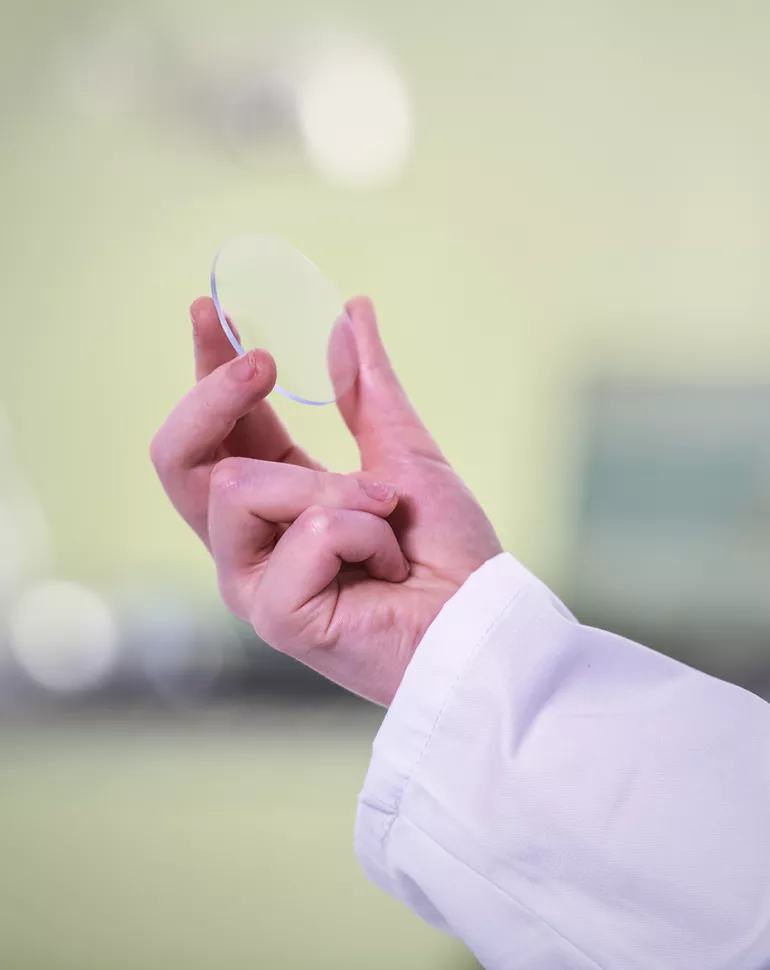Children spend their days shifting focus between whiteboards, books, and screens inside, as well as focusing outside for recess, free time, or sports. According to doctors at UCLA, 80% of classroom learning is visual.¹ So, providing clear vision is a must for children. We measure lens clarity through Abbe value, which measures chromatic aberration. The higher the Abbe value, the clearer the lens. While polycarbonate has an Abbe value around 30, HOYA Phoenix® lenses score significantly higher at 45. This delivers noticeably sharper and more comfortable vision.
Children require more than just clear vision, they also need safe vision. Every lens material has a different level of safety. Although plastic lenses offer the highest clarity (aside from glass) with an Abbe value of 58, it is far too brittle of a material to be recommended for children. Therefore, most parents believe polycarbonate lenses are the better option. However, in the real world, where impacts can occur, such as during sports, recess, or playing with friends, HOYA Phoenix® lenses maintain protective and optical performance longer than polycarbonate.²
Then there’s the weight. Parents often ask for the “lightest lens” and assume it’s polycarbonate. However, when measuring the specific gravity, or density, of each material, HOYA Phoenix® is lighter than polycarbonate. This helps to maximize comfort, so children don’t feel tempted to take them off.
The Trivex material used in HOYA Phoenix® lenses is also more chemically stable than polycarbonate, making it a safer option for cleaning and everyday handling. When it comes to durability–especially for active kids–it has the highest tensile strength, which helps it resist cracking at drill points, hold up against accidental bending, and handle rough days at recess like a champ.
A Conversation Worth Having
When you talk to parents about lens options, you are recommending features and benefits, as well as giving them peace of mind through a personalized vision solution. You’re helping them make choices that protect their child’s vision, reduce frustration, and avoid unnecessary visits back to your office for scratched, cracked, or uncomfortable lenses.
These conversations don’t have to be long or technical. The next time a parent says, “These will be polycarbonate, right?” you can respond with something like:
“Polycarbonate is the old standard. Now we have something better that offers the same level of protection with the added benefits of sharper vision and more durability. It’s what I’d choose for my own kids.”
Or you could explain:
“Polycarbonate was our go-to lens material for years, mostly because of its impact resistance. Our new standard is a material that is just as protective, provides clearer vision, and is even lighter than polycarbonate.”
As opticians, it’s our job to help parents understand the value of better vision, especially during such a critical time in their child’s development. Kids are reading more, learning faster, and spending more time on screens than ever before. If there’s a better lens material to support that, why wouldn’t we offer it?
HOYA Phoenix® lenses are made with one of the most popular materials among HOYA customers and it should be your first recommendation. The more we talk about it with parents or patients, the more we shift the industry toward a standard that truly reflects what’s best for their needs.
Let’s kick off this back-to-school season by doing what we know is best for patients. Leave the old poly habit behind, offer HOYA Phoenix lenses and provide optimal clarity for your patients. Because for the kids walking out of your practice, seeing clearly is the foundation for everything they’re about to learn.
And that’s something worth changing lens materials for.
For more information, download the white paper.

